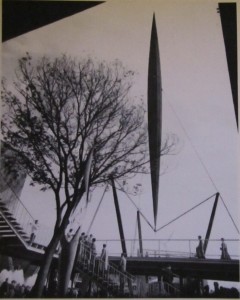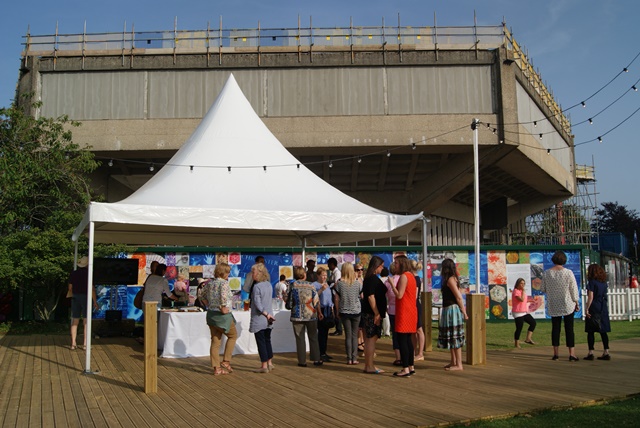
Philip Powell and Hidalgo Moya met when both were studying to become architects at the famous Architectural Association (AA), and later formed their own practice. One of their most memorable pieces of work was the winning competition entry for the Festival of Britain (1951) – the Skylon. A cigar shaped folly; it was to be the London Eye or Spinnaker Tower of the time that illustrated great technical innovation. It is no surprise that as a result the pair received a huge amount of publicity that really put Powell and Moya on the architectural map.
As a consequence of the Skylon, Powell and Moya were inundated with work, so when in 1959 they were asked by Leslie Evershed Martin if they would design a Theatre, they initially turned the commission away. They were particularly reluctant as the pair had never designed a theatre before – they were better known for hospitals and housing. But Evershed Martin was keen to employ an architect that had no prior experience in theatre design to avoid any preconceptions. For him, it was important that this was a new type of theatre.
Leslie Evershed Martin convinced Powell and Moya to design Chichester Festival Theatre by giving them a very open and intriguing brief. He asked them to design a theatre that could seat 1300 to 1400 people around a thrust stage and have a budget of £100,000 as the project was to be funded solely on public donations. It would also have to be built in phases so it could prove its worth before any more money was invested in it. Apart from that Powell and Moya were told they could be as creative as they liked. Evershed Martin then left them alone for three months to work on their proposal. Philip Powell later described Evershed Martin as ‘naive, self important, but right’.
The result of Powell and Moya’s involvement has seen the design of a unique theatre and a building that pushes the boundaries of performance, construction and architecture.





